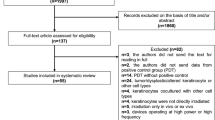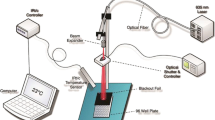Abstract
Photobiomodulation is widely used in clinical practice, and there is increasing interest in using this tool to treat numerous dysfunctions in living organisms. Therefore, this study aimed to verify the action of blue and red light-emitting diode light in cells. Human fibroblast cell line (HFF-1) were irradiated by blue (470 nm) or red (658 nm) light at doses of 4 and 18 J/cm2, respectively. Laboratory analyses were carried out to check for viability, proliferation, cell death, and the formation of reactive oxygen and nitric oxide species. The blue light demonstrated cell protection potential by reducing free radical formation and protecting the cell membrane by decreasing double-stranded DNA strands. On the other hand, the red light showed less potential for cell protection due to the risk of associating more significant nitric oxide formation with increased reactive oxygen species formation, in addition to having a greater amount of extracellular DNA. Cell damage prevention is a potential beneficial effect of blue light at 18 J/cm2. Despite the consolidated effects of red light in treating wounds, there was a potential toxic effect of this wavelength in the doses studied. Given the above, new studies relating these parameters with pathological cells or aggressors that simulate damage may offer results that can better support clinical practice.






Similar content being viewed by others
References
Robijns J, Censabella S, Claes S, Pannekoeke L, Bussé L, Colson D, Kaminski I, Bulens P, Maes A, Noé L, Brosens M, Timmermans A, Lambrichts I, Somers V, Mebis J (2018) Prevention of acute radiodermatitis by photobiomodulation: a randomized, placebo-controlled trial in breast cancer patients (TRANSDERMIS trial). Lasers Surg Med 50:763–771. https://doi.org/10.1002/lsm.22804
Kuffler DP (2016) Photobiomodulation in promoting wound healing: a review. Regen Med 11(1):107–122. https://doi.org/10.2217/rme.15.82
Hamblin MR, Nelson ST, Strahan JR (2018) Photobiomodulation and cancer: what is the truth? Photomed Laser Surg 36(5):241–245. https://doi.org/10.1089/pho.2017.4401
Nishioka MA, Pinfildi CE, Sheliga TR, Arias VE, Gomes HC, Ferreira LM (2012) LED (660 nm) and laser (670 nm) use on skin flap viability: angiogenesis and mast cells on transition line. Lasers Med Sci 27(5):1045–1050. https://doi.org/10.1007/s10103-011-1042-7
Heiskanen V, Hamblin MR (2018 Aug 8) Photobiomodulation: lasers vs. light emitting diodes? Photochem Photobiol Sci 17(8):1003–1017. https://doi.org/10.1039/c8pp90049c
Weiss RA, McDaniel DH, Geronemus RG et al (2005) Clinical experience with light-emitting diode (LED) photomodulation. Dermatol Surg 31(9 Pt 2):1199–1205. https://doi.org/10.1111/j.1524-4725.2005.31926
Yeh NG, Wu C-H, Cheng TC (2010) Light-emitting diodes: their potential in biomedical applications. Renew Sustain Energy 14(8):2161–2166. https://doi.org/10.1016/j.rser.2010.02.015
de Sousa AP, Paraguassú GM, Silveira NT, de Souza J, Cangussú MC, dos Santos JN, Pinheiro AL (2013) Laser and LED phototherapies on angiogenesis. Lasers Med Sci 28(3):981–987. https://doi.org/10.1007/s10103-012-1187-z
Liebmann J, Born M, Kolb-Bachofen V (2010) Blue-light irradiation regulates proliferation and differentiation in human skin cells. J Invest Dermatol 130(1):259–269. https://doi.org/10.1038/jid.2009.194
Fischer MR, Abel M, Lopez Kostka S, Rudolph B, Becker D, von Stebut E (2013) Blue light irradiation suppresses dendritic cells activation in vitro. Exp Dermatol 22(8):558–560. https://doi.org/10.1111/exd.12193
Keemss K, Pfaff SC, Born M, Liebmann J, Merk HF, von Felbert V (2016) Prospective, randomized study on the efficacy and safety of local UV-free blue light treatment of eczema [published correction appears in Dermatology.;232(4):522]. Dermatology. 232(4):496–502. https://doi.org/10.1159/000448000
Zecha JA, Raber-Durlacher JE, Nair RG et al (2016) Low-level laser therapy/photobiomodulation in the management of side effects of chemoradiation therapy in head and neck cancer: part 2: proposed applications and treatment protocols. Support Care Cancer 24(6):2793–2805. https://doi.org/10.1007/s00520-016-3153-y
Falcone D, Uzunbajakava NE, van Abeelen F et al (2018) Effects of blue light on inflammation and skin barrier recovery following acute perturbation. Pilot study results in healthy human subjects. Photodermatol Photoimmunol Photomed 34(3):184–193. https://doi.org/10.1111/phpp.12367
Kang KS, Wang P, Yamabe N, Fukui M, Jay T, Zhu BT (2010) Docosahexaenoic acid induces apoptosis in MCF-7 cells in vitro and in vivo via reactive oxygen species formation and caspase 8 activation. PLoS One 5(4):e10296. https://doi.org/10.1371/journal.pone.0010296
Cadoná FC et al (2014) Genomodifier capacity assay: a non-cell test using dsDNA molecules to evaluate the genotoxic/genoprotective properties of chemical compounds. Anal Methods 6(21):8559–8568. https://doi.org/10.1039/C4AY01709A
Choi, Woo-Suk et al (2012) The regulatory effect of veratricacidon NO production in LPS-stimulated RAW264. 7 macrophage cells. Cellimmunol 280(2):164–170. https://doi.org/10.1016/j.cellimm.2012.12.007
Costa F, Dornelles E, Mânica-Cattani MF et al (2012) Influence of Val16Ala SOD2 polymorphism on the in-vitro effect of clomiphene citrate in oxidative metabolism. Reprod BioMed Online 24(4):474–481. https://doi.org/10.1016/j.rbmo.2012.01.009
Oh PS, Kim EM, Lim S et al (2021) Conditioned media from blue light-emitting diode–exposed fibroblasts have an anti-inflammatory effect in vitro. Lasers Med Sci 36:99–109. https://doi.org/10.1007/s10103-020-03018-x
Hamblin MR (2018) Mechanisms and mitochondrial redox signaling in photobiomodulation. Photochem Photobiol 94(2):199–212. https://doi.org/10.1111/php.12864
Wolin MS (2000) Interactions of oxidants with vascular signaling systems. Arterioscler Thromb Vasc Biol 20(6):1430–1442. https://doi.org/10.1161/01.atv.20.6.1430
Aktan F (2004) iNOS-mediated nitric oxide production and its regulation. Life Sci 75(6):639–653. https://doi.org/10.1111/j.1365-2567.2004.01984.x
James SL (1995) Role of nitric oxide in parasitic infections. Microbiol Rev 59(4):533–547
Moncada S, Palmer RM, Higgs EA (1991) Nitric oxide: physiology, pathophysiology, and pharmacology. Pharmacol Rev 43(2):109–142
de Sousa AP, Santos JN, Dos Reis JA Jr, Ramos TA, de Souza J, Cangussú MC, Pinheiro AL (2010) Effect of LED phototherapy of three distinct wavelengths on fibroblasts on wound healing: a histological study in a rodent model. Photomed Laser Surg 28(4):547–552. https://doi.org/10.1089/pho.2009.2605
Author information
Authors and Affiliations
Corresponding author
Ethics declarations
Conflict of interest
The authors declare that they have no conflict of interest.
Additional information
Publisher’s note
Springer Nature remains neutral with regard to jurisdictional claims in published maps and institutional affiliations.
Rights and permissions
About this article
Cite this article
dos Santos Ferreira, F., Cadoná, F.C., Aurélio, A.R. et al. Photobiomodulation-blue and red LED: protection or cellular toxicity? In vitro study with human fibroblasts. Lasers Med Sci 37, 523–530 (2022). https://doi.org/10.1007/s10103-021-03290-5
Received:
Accepted:
Published:
Issue Date:
DOI: https://doi.org/10.1007/s10103-021-03290-5




